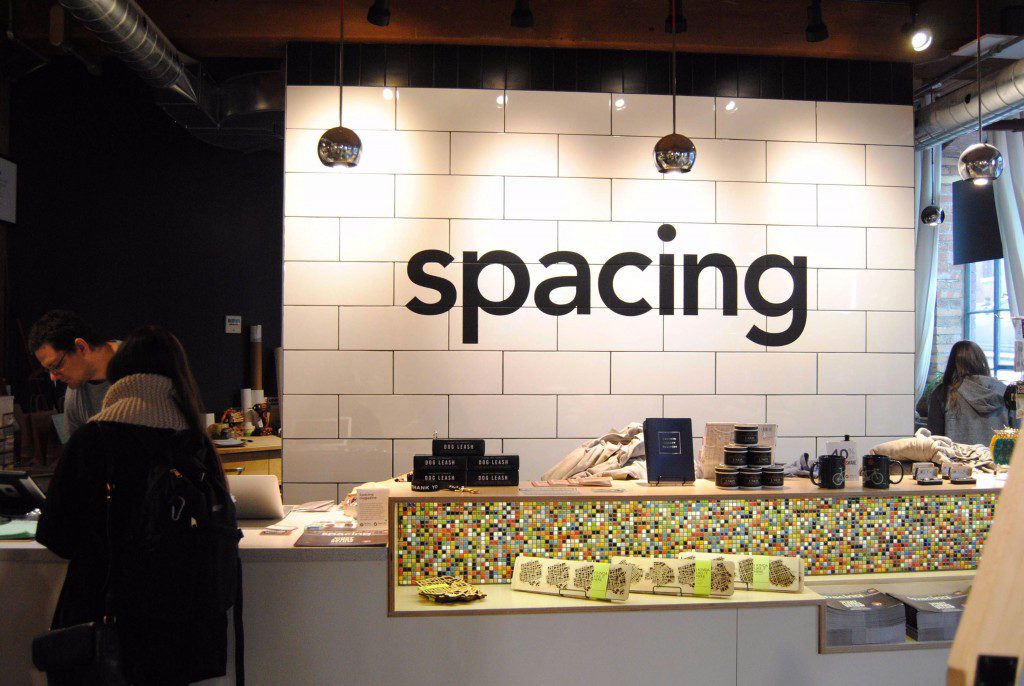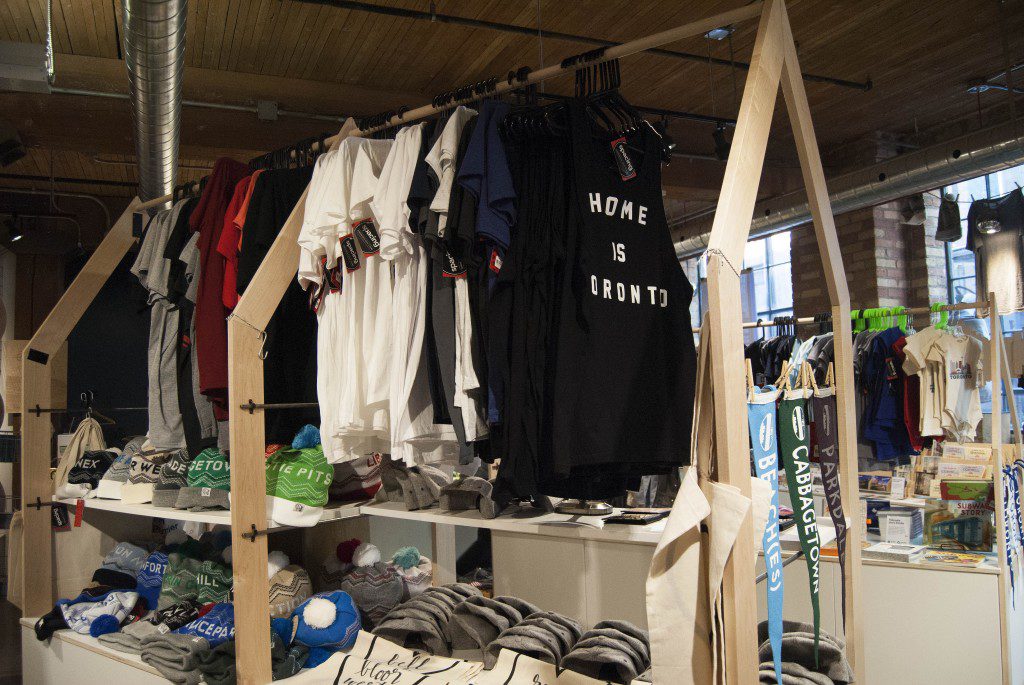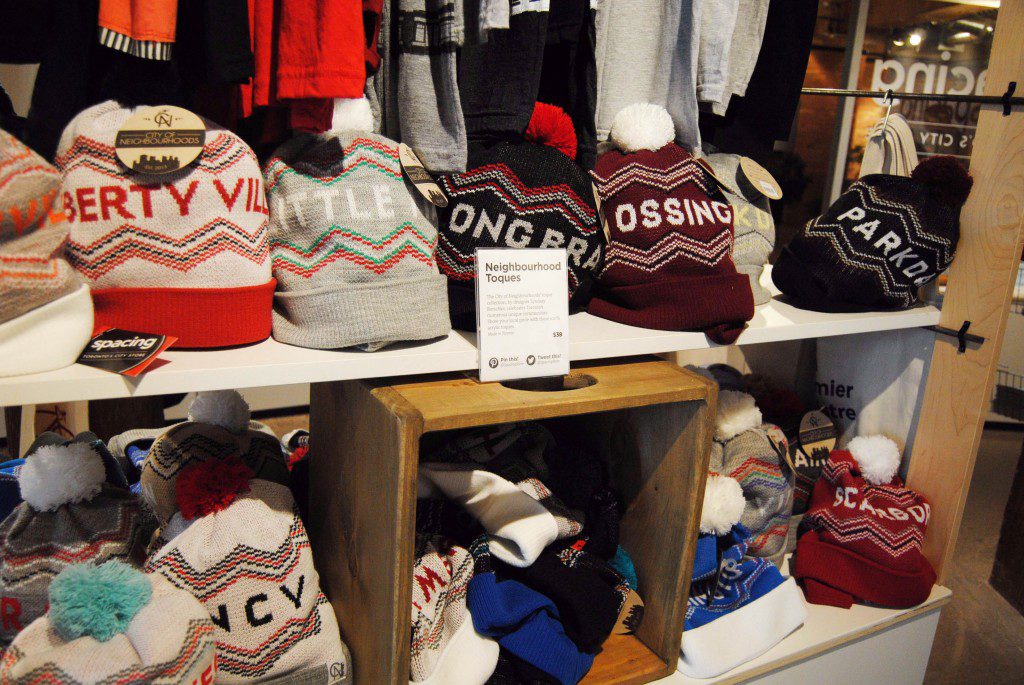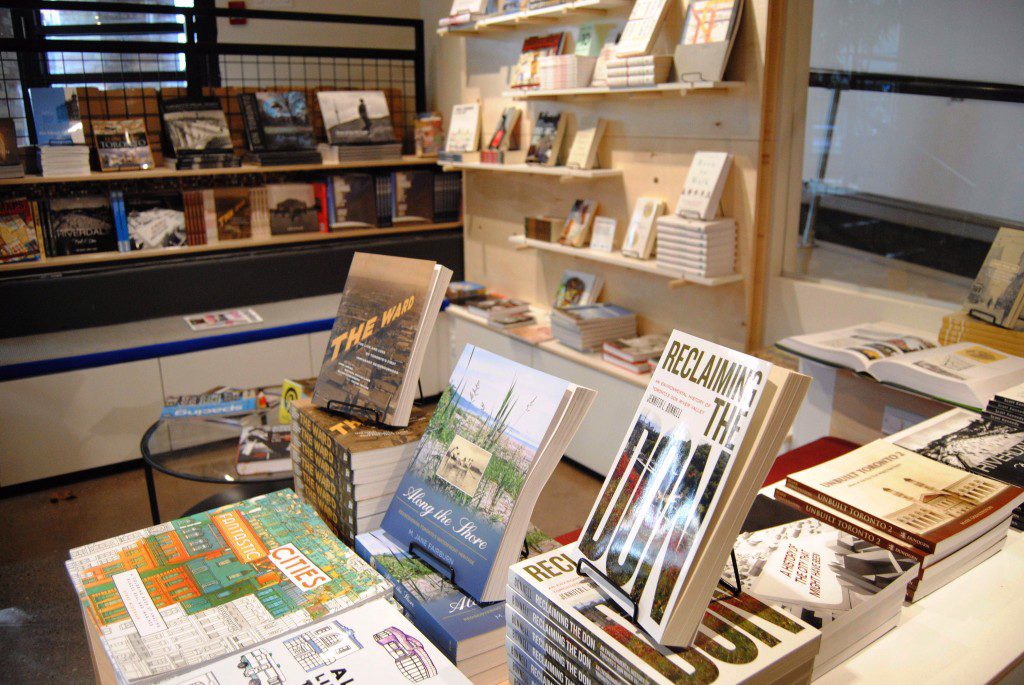Can Retail Shops Save Magazines?
Spacing’s store brings in much-needed revenue and helps the urban-issues quarterly live what it preaches. And it’s not the only publication adopting this strategy
Racks of t-shirts with “Toronto vs Everybody” emblazoned across the locally made threads hang near toques uniquely stitched with different urban neighbourhoods in the Toronto Spacing Store. Stocked with mostly city-themed paraphernalia, the shop is a curated collection of clothing, houseware items and novelty gifts. The perimeter is lined with books about architecture, vintage subway map posters, handcrafted knickknacks and the store’s popular button and magnet collection. Opened in November 2014, the downtown store resembles a souvenir shop without the made-in-China kitsch. It’s located on the ground level of a heritage building and the magazine’s staff works from a small office studio hidden behind the checkout counter.
Apart from a place to sell goods, the store is a business strategy that’s helping the magazine survive. Canadian publications—especially independent ones—often need to find additional revenue streams to sustain themselves. The store has been a lucrative move: Spacing has doubled its yearly revenue since opening the shop. It has also boosted magazine newsstand sales by 15 percent and increased subscriptions. And since opening the Toronto-based retail shop, the publication, which covers urban issues, is finding success rooting itself physically in a city that it critiques and celebrates. Matthew Blackett, the publisher, editor and co-founder of Spacing, says the benefit of operating out of a public retail space is that it allows the magazine to live what it preaches.
Blackett was part of a team of journalists that launched Spacing in 2003. Soon after, they realized they needed to find additional revenue if the magazine was going to grow. The quarterly (two issues a year focus on Toronto and two are national) publishes content on urban issues such as public transit, municipal politics and community planning. Advertising and subscription sales are often not enough to sustain a small publication, so within a year of going into print, Spacing began selling buttons and magnets—including the popular subway stops and Toronto highway signs collections—online. The in-house designs started to take off and began to make up about 15 to 20 percent of the company’s revenue.
From the success of its online store, the idea to open a bricks-and-mortar retail one was “pretty organic.” Spacing teamed up with independent publisher Coach House Books for a pop-up shop in 2013 and used the temporary store experience to see how receptive people were to the idea of a permanent retail space. “We have demonstrated that we have a very good knack of either creating, or choosing and finding people that are doing good stuff,” says Blackett.
Consultant D.B. Scott, president of Impresa Communications Limited, says that most magazines today can’t just rely on their publication for financial security. He cites Downhome as another example of a magazine finding success through a retail space. Its store in St. John’s, Newfoundland, has been a staple for the brand and attracts shoppers from across Canada. Grant Young, president of Downhome Incorporated, says the company generates $4 million annually, with $1 million coming from retail sales and another $1 million from wholesale distribution. The store sells a range of merchandise from stuffed plush puffins, t-shirts and Newfoundland souvenirs.
Success, Scott says, depends on a business strategy that’s consistent with the general image of the magazine. But shops aren’t just for small publications. Monocle, the glossy London-based magazine about current affairs, business, culture and design has opened retail stores in Europe, Asia and, in 2012, in Toronto.
While Spacing has no immediate plans of opening more shops in other parts of Canada, the store was designed in a way that the concept would be transferable to other cities. They can use the same model to sell merchandise related to different urban areas. Spacing wants to conquer the Toronto market first before considering a location in Vancouver or Calgary.
Blackett thinks stores can help save some magazines, depending on the genre. He believes sports magazines, active lifestyle publications and niche titles could thrive in a retail market. “We’re lucky that we are editor-owned,” he says, “which allows us to experiment and take risks that other magazines can’t existentially afford.”
But it’s not just about money. The Spacing team previously operated out of an office building that didn’t allow readers to access staff without passing security, which wasn’t aligning with the magazine’s notion of public space and overall ethos. “Now,” says Blackett, “you can walk right into our store and theoretically yell at us about an article, or pitch an article, or talk to us about an issue.”
Laura Hensley is the departments editor for the spring 2016 issue of the Ryerson Review of Journalism.



















































